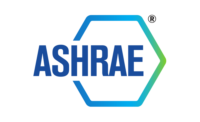Back in 1980, I attended my first ASHRAE winter meeting, and yes, I am aware that some of you readers weren’t born then, but I digress. In 1980, I was invited to present a seminar and introduce the dual fan-double duct (DF-DD) air handling system conference to attendees of that semi-annual conference. I also sat in on my first TC 9.01 technical committee session to advocate this DF-DD concept get published in the next ASHRAE Systems and Equipment Handbook in 1984.
While sitting in on the TC 9.01 meeting, it became obvious to me that if this “better than sliced bread” HVAC concept was to make it to the pages of the 1984 handbook, I needed to champion the revisions to the then chapter 3 on all air systems (now chapter 4 air handling and distribution) and thus my commitment to ASHRAE at a national level began.
Since that January in 1980, I have been fortunate to have companies I worked for invest a lot of time and money, as well as my own time and money (that I must say has been and continues to be well worth it) in this ongoing effort. To this point, I have encouraged others in the industry, employers, and employees alike to get involved, and some have taken me up on my advice.
Why get involved? Well, just peruse the chapters in each of the four ASHRAE handbooks and pick a chapter that interests you. Then decide if you can enhance the information in this chapter for engineers, facility technicians, trade contractors, and educators in that order. Assuming you like the industry you are in, and want to contribute to its continued success, then next schedule a meeting with your company’s human resource person and convince him that your participation at the national level will benefit the company in addition to benefiting you.
Past experience has shown me that this discussion is a tough sell to consulting firms who plead poverty when it comes to company-sponsored employee technical development. It is far more cost-effective to have equipment vendors bring in free lunch and give a self-serving training session. Now don’t get me wrong on the use of lunch-and-learn presentations — especially if the lunch is really, really good —but it just isn’t the same as networking with your peers from around the country on improving the information provided inside each of the four handbooks.
My experience has also shown me that if you work for a trade industry (HVAC companies and construction managers) you will have a better chance of getting yourself to the winter, as well as summer, ASHRAE meetings. I have always believed that the construction industry, like the equipment manufacturers, is far more progressive with employee professional development than consulting engineering firms. Consulting engineers will blame architects for their dilemma by saying, “they don’t get the fees needed to be able to invest in professional development,” but that is a topic for another day.
Equipment manufacturers do contribute a lot to improving these handbooks, but they must walk a fine line to avoid a conflict of interest. Just think if a manufacturer could get the Systems and Equipment handbook to require that only this manufacturer’s equipment was an acceptable means to heat, air-condition, and/or ventilate a specific project. Wouldn’t that be an interesting dilemma for the building industry? Still, equipment manufacturers are probably the only participants who invest research money into improving their products and introduce new technology. That money alone is an incentive for the equipment manufacturer who can say they invented a better mousetrap for the HVAC application. Most business people know that if you can be ahead of the curve with a technical breakthrough, then it will most likely provide a significant return on investment until the competition catches up, and then a new better HVAC mousetrap is needed.
And when it comes to seeing all the latest technology, as well as current technology, it is the AHR (air-conditioning, heating, refrigeration) Expo show that opens its doors to thousands of people in the HVAC industry to see, listen, and touch the products and materials that make up the HVAC installation and service industries. As an engineer, facility technician, or contractor attending this show, it is an added benefit to those committed to improving their own technical knowledge while contributing this knowledge to the ASHRAE handbooks.




